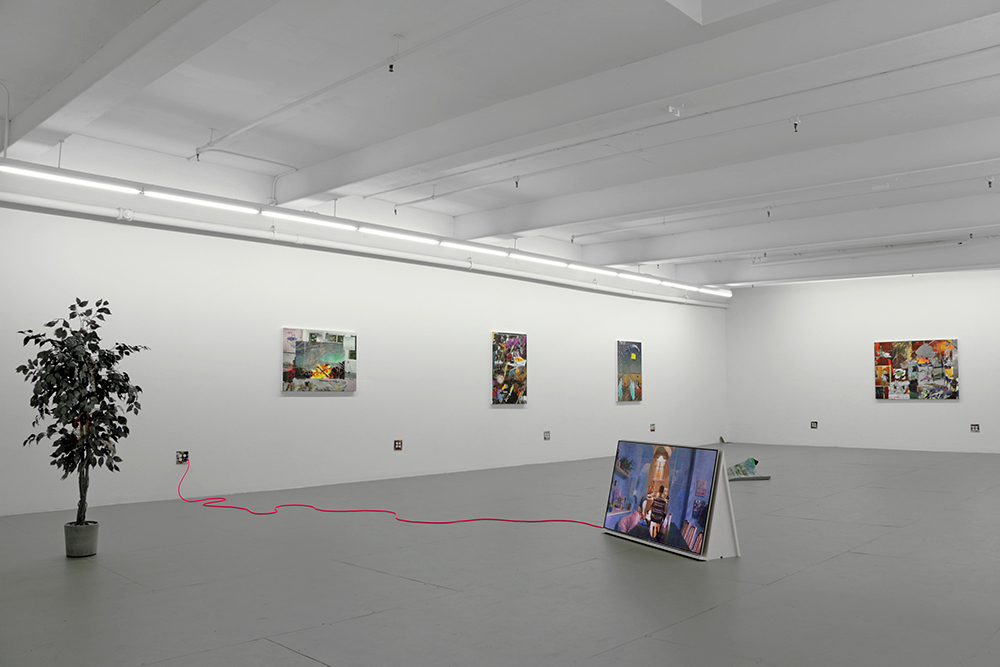
Zach Nader, “psychic pictures”, installation view. Courtesy of the artist and Microscope Gallery.
Zach Nader: psychic pictures
Microscope Gallery
Brooklyn, NY
April 5- May 12, 2019
Sydney King
As I sat in front of “psychic pictures” (4:35 single-channel HD video, 2019), Zach Nader’s latest video work, I felt like I was having an optical migraine. Throughout the film, makeshift blobs slide across the screen, morphing in shape and content. Sourced from dozens of advertisements, these video fragments depict families at the dinner table, a child shaking a piggy bank, or a man petting his dog. As these isolated scenes bob and weave, the background rapidly alternates between advancing video clips, creating a strobe-like effect.
The video is part of a larger installation of the same name at Microscope Gallery in Brooklyn. Nader’s third solo exhibition with the gallery, this show presents photo-sculptures, photographs UV-printed onto hand-carved wood panels, and a monitor plugged into a wall with a bright pink cable. While Nader’s images defy easy comprehension, his video immediately draws the viewer’s attention within the space.
Throughout my viewing, I found myself constantly trying and yet unable to focus on the shifting content before me. In fact, the film seems to target the very mechanisms involved in vision. Our eyes make hundreds of small movements, or saccades, each minute. These movements allow us to generate a complex visual understanding of our surroundings and update our brain with information. When we choose to focus on a specific object of interest, our peripheral vision is updated less frequently and missing details are often replaced by fabrications of the mind. In “psychic pictures,” it is nearly impossible to delegate objects to the periphery. Every inch of the frame is refreshed at different rates, drawing the viewer’s attention in so many directions as to overwhelm the senses. In this way, Nader’s film prevents the viewer from passively consuming information, as they might with the very content he sources.
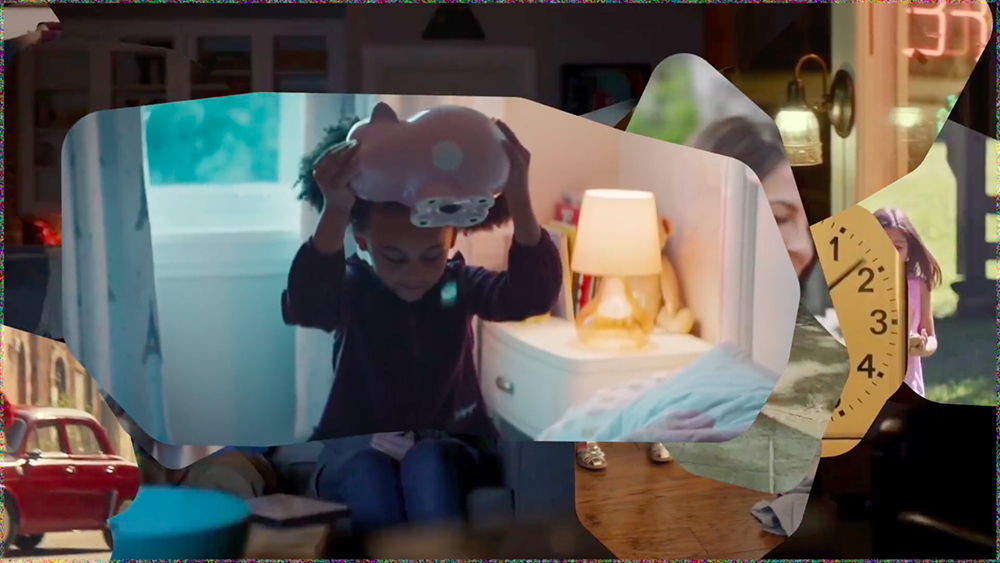
Zach Nader, still from “psychic pictures”, 2019, single-channel HD video, silent, 4 minutes 35 seconds. Courtesy of the artist and Microscope Gallery.
“psychic pictures” also calls to mind the formal qualities of online advertisements. Pop-up windows, right rail ads, and banners all vie for viewers’ attention in a similar manner to Nader’s shifting blobs. In an effort to ignore unnecessary information, most consumers have developed strategies for suppressing these kinds of stimuli; in eye-tracking studies,[1] users typically avoid images and areas of webpages associated with advertisements.
In viewing Nader’s photographs, however, I found myself searching for and clinging to any familiar objects I could find. In “hot dog holiday” (2019), I lingered on the degraded image of a watermelon and a hot dog stand selling a “buttered” foodstuff. In “they will not die” (2018), I took stock of the kitchen cabinets, a bonfire, and bags filled with what looks to be Domino brand sugar. My instinctual reaction was to determine what objects I could identify, and to then guess at their original context. In other words, the way in which Nader re-mixes and layers his images forces the viewer to pause and slowly process its content. These works cannot be read or ignored based on a typical understanding of advertisement photography, as they cannot be easily consumed.
Perhaps the most puzzling element of the show is its sculptural component. In the back corner of the room stands “ficus” (2019)—a synthetic ficus tree, spray-painted grey and with fragments of printed matter hanging onto its leaves. Nader creates these photo-sculptures by UV-printing onto acrylic mesh. Physically resembling a cross between a lace curtain and a bath mat, this material is also draped over a purple dog in “imaginary waiting” (2019).
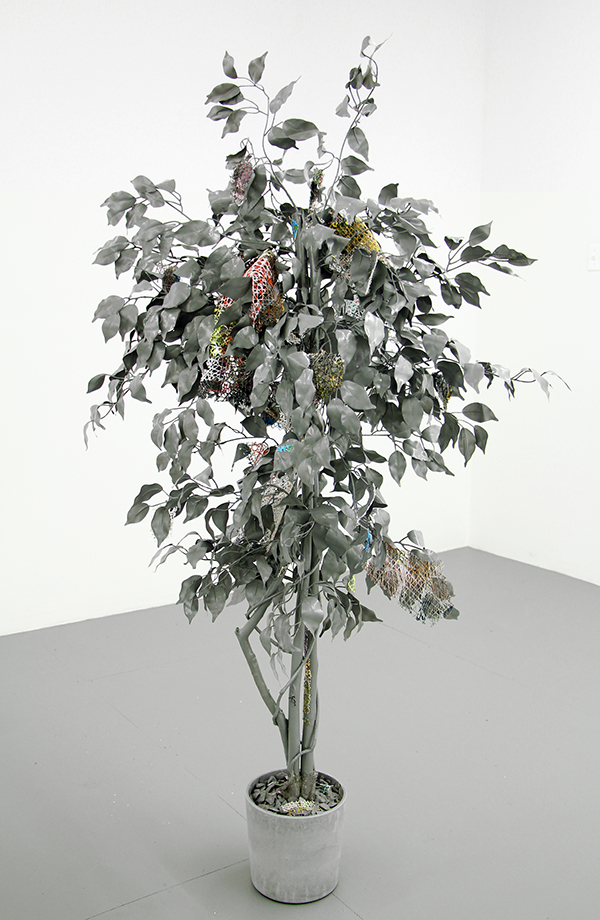
Zach Nader, “ficus”, 2019, synthetic ficus, acrylic, UV print, epoxy, pot, slate stone, 70 x 38 x 36 inches (detail). Courtesy of the artist and Microscope Gallery.
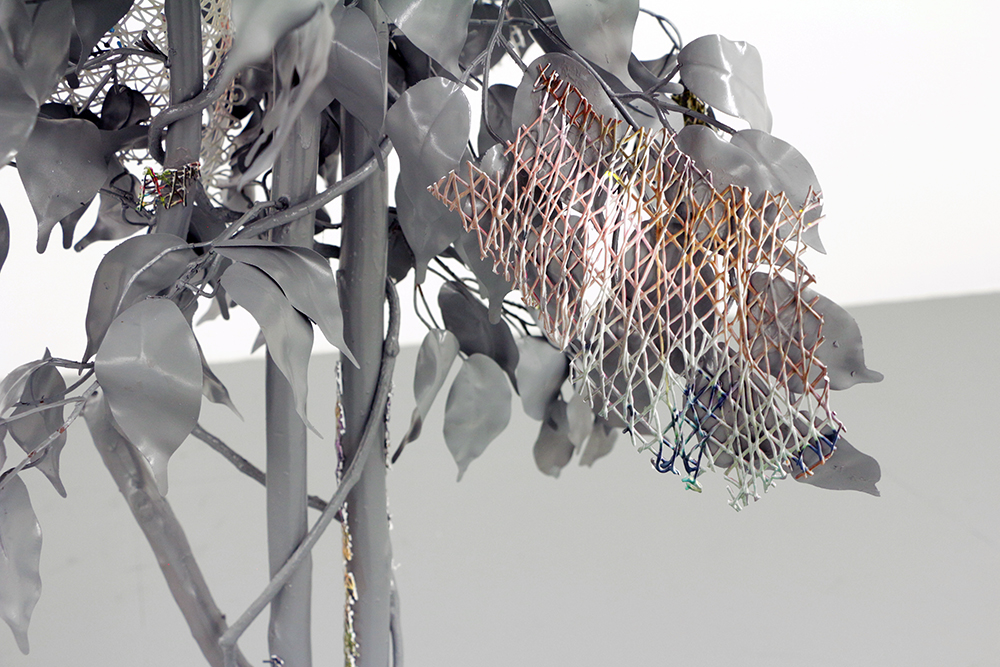
Zach Nader, “ficus”, 2019, synthetic ficus, acrylic, UV print, epoxy, pot, slate stone, 70 x 38 x 36 inches (detail). Courtesy of the artist and Microscope Gallery.
The most fascinating aspect of these print sculpture pieces is their permeability, the way Nader’s images allow stray information and context to come through. While fragments of their printed content can be discerned from afar, most noticeable are the spaces in-between. Through these images, the viewer can see the leaves of the ficus tree, the walls of the gallery, or the Day-Glo fabric of a green hoodie. No longer limited to a single dimension or plane, Nader’s source images change depending on their context. Their form and resulting illegibility beg the question – can these pieces be considered “pictures” at all? What is the point of image content that cannot be discerned?
Advertisements, in contrast, are impermeable in that their intention is to close down all other meanings but the intended one – the one that tries to sell. Printing on a wide variety of materials, Nader gestures to the way that advertisements plaster nearly every surface imaginable. On a daily basis, we see these images adhered to trucks, bus windows, billboards, and clothing. These photographs drape and stretch over their substrates, regardless of surface imperfections. In this way, printed advertisements refuse to acknowledge their own materiality, stubbornly arguing for the content they promote.
Featuring digital and physical alterations, Nader’s panel works showcase the destruction of impermeable images. His carvings recall the way people scribble on subway advertisements. Such acts are meant to degrade, destroy, and to insert contrasting meanings into the work. By using a similar visual language, Nader further undercuts what integrity is left of the advertisements; his works dislocate them from their intended associations and present the viewer with mildly familiar, yet upended imagery.
Stripped of their agenda, the photographs are liberated from their rhetorical duties. Where advertisements rely on clarity and the quick processing of information, Nader’s images demand time and close attention – a challenging, but altogether worthwhile request.
______
[1] Pernice, Kara. “Banner Blindness Revisited: Users Dodge Ads on Mobile and Desktop.” Nielsen Norman Group, 22 Apr. 2018, www.nngroup.com/articles/banner-blindness-old-and-new-findings/
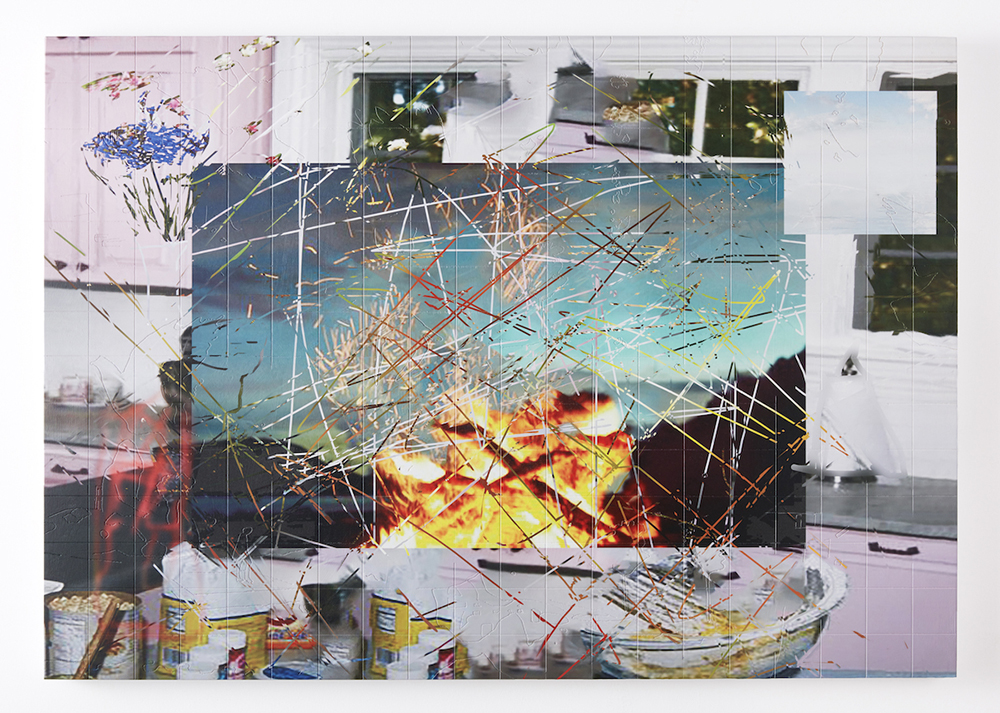
Zach Nader, “they will not die”, 2018, acrylic and UV print on carved hand-wood panel, 28 x 40 inches. Courtesy of the artist and Microscope Gallery.
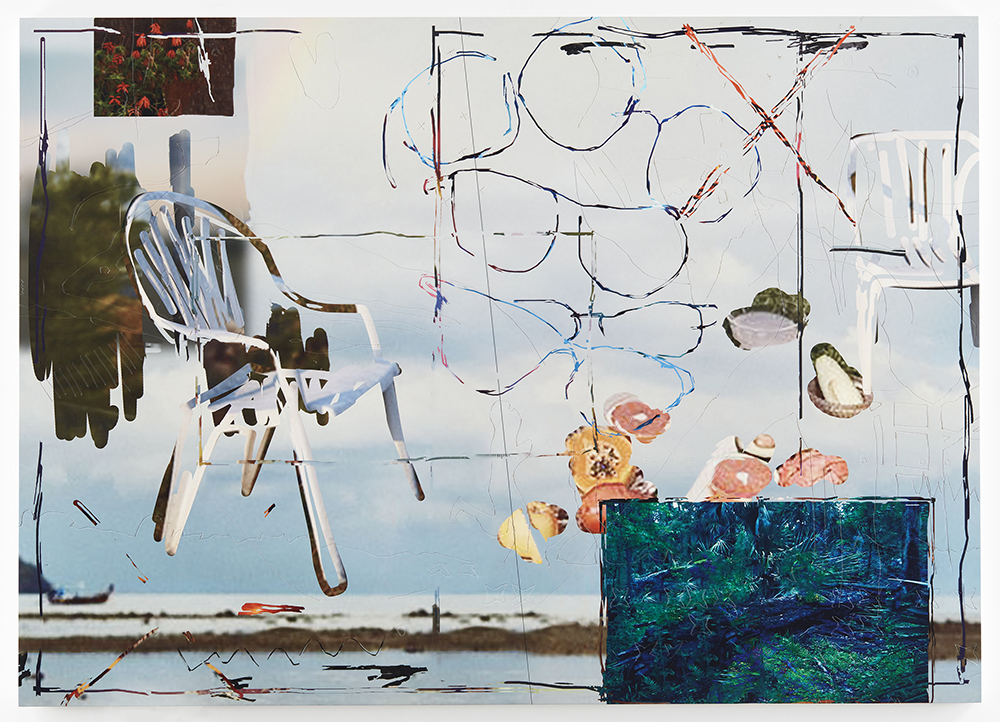
Zach Nader, “finally somewhere to sit”, 2019, acrylic and UV print on carved hand-wood panel, 40 x 56 inches. Courtesy of the artist and Microscope Gallery.
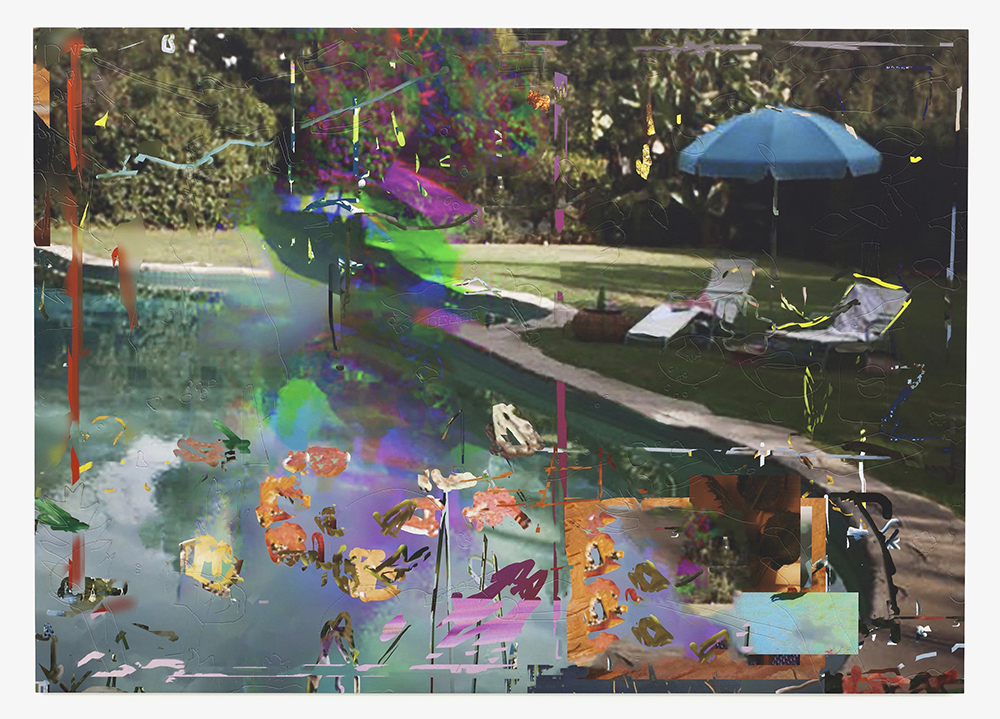
Zach Nader, “stay cool”, 2019, acrylic and UV print on carved hand-wood panel, 40 x 56 inches. Courtesy of the artist and Microscope Gallery.
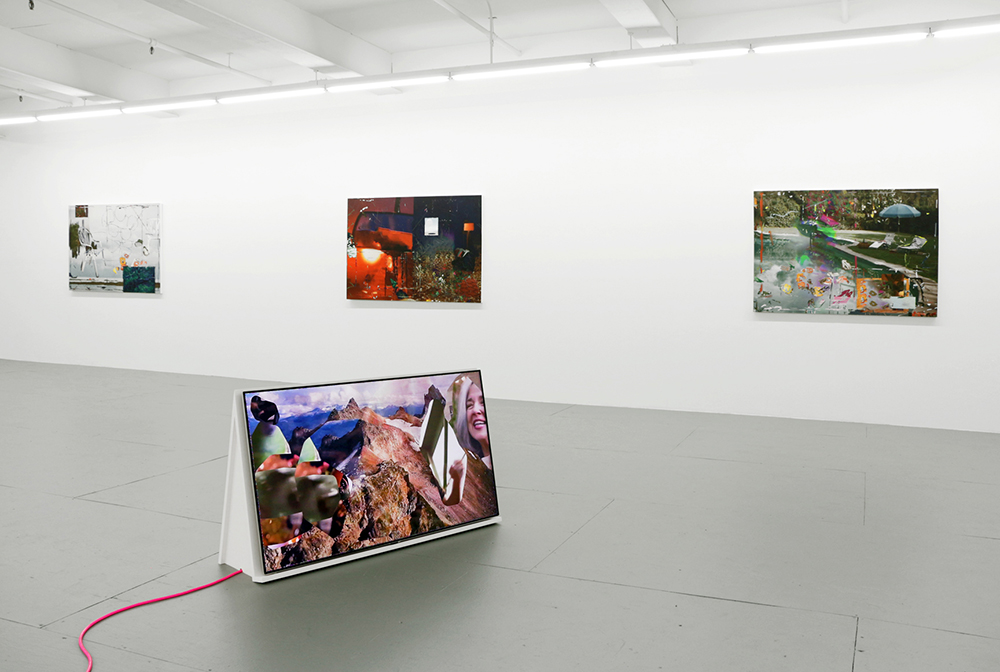
Zach Nader, “psychic pictures”, installation view. Courtesy of the artist and Microscope Gallery.
psychic pictures is on view at Microscope Gallery until May 12th.
For more information, visit: Microscope Gallery and Zach Nader
____________________________________
Stay connected with In the In-Between
_____________________________
Submit your work
